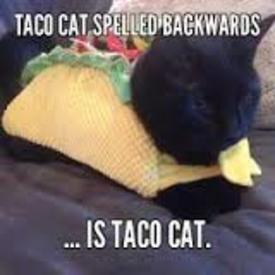We are pleased to announce that as of March 4, 2025, an updated Rich Text Editor has been introduced in the MyFitnessPal Community. To learn more about the changes, please click here. We look forward to sharing this new feature with you!
Blended vs Unblended foods

Merkavar
Posts: 3,082 Member
So pretty simple, is there any difference between eating some pieces of fruit and drinking the same fruit after being blended.
Basically I have seen some people claim blending fruit makes it have more calories but I can't see how that happens.
I could maybe see it impact the absorption speed, but in the end it would be the same, right?
Or is there something about blending that increases the calories?
what about other foods? Blended meat? Blended grains? Blended icecream?
Basically I have seen some people claim blending fruit makes it have more calories but I can't see how that happens.
I could maybe see it impact the absorption speed, but in the end it would be the same, right?
Or is there something about blending that increases the calories?
what about other foods? Blended meat? Blended grains? Blended icecream?
0
Replies
-
Calories would be the exact same. The difference is that many people don't feel full for as long when drinking the blended foods vs eating them in their natural state.4
-
Calories would be the exact same. The difference is that many people don't feel full for as long when drinking the blended foods vs eating them in their natural state.
yeah, and this might lead to eating more later.
Just seemed weird for people to think blending adds calories somehow1 -
Are you maybe thinking juicing? Juicing removes a lot of the fibre and just leaves the juice, which is where the sugar is, so you get more sugar and less fibre. Juices can be a calorie bomb.
Blending the fruit with all the bits you would have eaten it whole is no different to just eating it.4 -
I remember years ago hearing soup can be more satiating than some equally calorific meals. Found this.
https://ncbi.nlm.nih.gov/pmc/articles/PMC2128765/
Soup preloads in a variety of forms reduce meal energy intake
As far as fruit is concerned whole or juiced the difference is the same but in real life would you juice 1 apple or 1 orange or 1 banana and then drink it? Most would probably juice multiple fruits, then have a glass of some volume and in that context more than likely consume more calories, ad-lib.0 -
neanderthin wrote: »I remember years ago hearing soup can be more satiating than some equally calorific meals. Found this.
https://ncbi.nlm.nih.gov/pmc/articles/PMC2128765/
Soup preloads in a variety of forms reduce meal energy intake
As far as fruit is concerned whole or juiced the difference is the same but in real life would you juice 1 apple or 1 orange or 1 banana and then drink it? Most would probably juice multiple fruits, then have a glass of some volume and in that context more than likely consume more calories, ad-lib.
The fruit statement? No - it isn't the same (juicing vs blended) because if you just juice it the weight does not include the fiber (which has weight) and so all you're consuming is the sugary juice. Fiber has value and weight.0 -
cmriverside wrote: »neanderthin wrote: »I remember years ago hearing soup can be more satiating than some equally calorific meals. Found this.
https://ncbi.nlm.nih.gov/pmc/articles/PMC2128765/
Soup preloads in a variety of forms reduce meal energy intake
As far as fruit is concerned whole or juiced the difference is the same but in real life would you juice 1 apple or 1 orange or 1 banana and then drink it? Most would probably juice multiple fruits, then have a glass of some volume and in that context more than likely consume more calories, ad-lib.
The fruit statement? No - it isn't the same (juicing vs blended) because if you just juice it the weight does not include the fiber (which has weight) and so all you're consuming is the sugary juice. Fiber has value and weight.
Right, I meant blended, thanks for the correction. Cheers.0 -
Alatariel75 wrote: »Are you maybe thinking juicing?
nope blending. so like the whole fruit blended up. no removing of pulp or anything like that.
0 -
There might be a minor difference in bioavailability of some nutrients, or a minor decrease in the TEF of the food (i.e., the calories it requires to digest it), in that blending sort of pre-does some of the initial steps of digestion rather thoroughly? Chewing takes a couple of calories, too. 😉🤣
Any effect should be so trivial as not to affect calorie counting or overall nutrition in any material way, though.0 -
So pretty simple, is there any difference between eating some pieces of fruit and drinking the same fruit after being blended.
Basically I have seen some people claim blending fruit makes it have more calories but I can't see how that happens.
I could maybe see it impact the absorption speed, but in the end it would be the same, right?
Or is there something about blending that increases the calories?
what about other foods? Blended meat? Blended grains? Blended icecream?
My guess is that those people are possibly talking about juicing where juicing requires more fruit to make the final product and you also have the downside of losing most of the fiber.
I blend smoothies pretty regularly and there isn't any difference in eating a 100g of blueberries vs blending 100g of blueberries. The only difference I could see is that it would be absorbed slightly faster because it's already been blended and broken down, but I don't think that would be anything particularly meaningful in the grand scheme of things.0 -
This might have something to do with WW, where I believe whole fruits are zero point / free foods and blended are not.1
-
I would think calories and fiber are the same. Let’s use orange juice as an example. Some people who drink juice, are actually consuming more than the juice of one orange. One average sized orange is 1/4 to 1/3 cup of juice, not much juice. Certainly served more at restaurants.1
-
kshama2001 wrote: »This might have something to do with WW, where I believe whole fruits are zero point / free foods and blended are not.
Which is just one more reason why WW's arbitrary and silly rules never made any sense to me3 -
kshama2001 wrote: »This might have something to do with WW, where I believe whole fruits are zero point / free foods and blended are not.
That might be it. would say a whole fruit be zero but blended is like 10 points?
so they are assuming that the WW point system is accurate and isnt scaled to promote eating raw and unprocessed foods?0 -
missysippy930 wrote: »I would think calories and fiber are the same. Let’s use orange juice as an example. Some people who drink juice, are actually consuming more than the juice of one orange. One average sized orange is 1/4 to 1/3 cup of juice, not much juice. Certainly served more at restaurants.
Yeah, one of the orange juices I drink sometimes says on the front it is 21 oranges in a 2L bottle.
imagine eating 21 whole oranges, take you the whole day. but you could drink the juice in just a few minutes.
but also I am talking about blending not juicing. Juicing seems obvious that it would be higher calories since not only does it take multiple fruits to get a glass of juice, you are taking only the most calorie dense parts. Juice calories are the same or higher than coke.1
Categories
- All Categories
- 1.4M Health, Wellness and Goals
- 391.5K Introduce Yourself
- 43.5K Getting Started
- 259.7K Health and Weight Loss
- 176.1K Food and Nutrition
- 47.3K Recipes
- 232.3K Fitness and Exercise
- 442 Sleep, Mindfulness and Overall Wellness
- 6.4K Goal: Maintaining Weight
- 8.5K Goal: Gaining Weight and Body Building
- 153.1K Motivation and Support
- 8.1K Challenges
- 1.3K Debate Club
- 96.4K Chit-Chat
- 2.5K Fun and Games
- 4K MyFitnessPal Information
- 16 News and Announcements
- 1.2K Feature Suggestions and Ideas
- 2.3K MyFitnessPal Tech Support Questions








